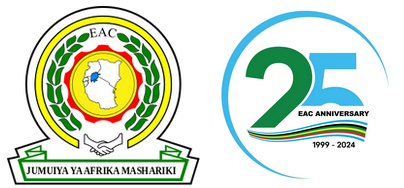Republic of Burundi
Burundi joined the East African Community in July 2007.
The country hosts the East African Health Research Commission (EAHRC), an institution of the Community which coordinates and promotes the conduct of health research in order to improve the health and well-being of the peoples of the Community.
Key facts
Joined EAC: July 2007
Population: 11.7 million (2019 Statistics)
GDP (nominal): US$ 3.2 Billion (2018 Statistics)
Official language: Kirundi, French
Timezone: GMT + 2hr
Currency: Burundi Franc (FBu)
Geography
Area: 27,834 sq. km
Coastline: none
Capital city: Gitega
Population density (per sq. km): 374
The Republic of Burundi is a landlocked country in the African Great Lakes region of East Africa, bordered by Rwanda to the north, Tanzania to the east and south, and the Democratic Republic of the Congo to the west. Burundi is a part of the Albertine Rift, the western extension of the East African Rift. The country lies on a rolling plateau in the center of Africa. The source of the Nile River is in Bururi province, and is linked from Lake Victoria to its headwaters via the Ruvyironza River, Lake Victoria is also an important water source, which serves as a fork to the Kagera River, while Lake Tanganyika is located in much of Burundi’s southwestern corner.
Languages
Kirundi and French are the official languages, and Kiswahili and English are widely spoken.
Communications
Country code 257 (no area codes); internet domain ‘.bi’.
Public holidays
New Year’s Day, Unity Day (5 February), Ntaryamira Day (6 April), Labour Day (1 May), Ascension Day (May), Independence Day (1 July), Assumption (15 August), All Saints’ Day (1 November), Christmas Day and Boxing Day.
Religious festivals whose dates vary from year to year include Good Friday, Eid al-Fitr (End of Ramadan, two days) and Eid al-Adha.
Transport
There are 12,300km of roads, 10% paved.
There is no railway.
The main international airport is Bujumbura International Airport in Bujumbura.
International relations
Burundi is a member of the African, Caribbean and Pacific Group of States, African Union, Common Market for Eastern and Southern Africa, Non-Aligned Movement, Organisation internationale de la Francophonie, United Nations and World Trade Organization.
Topography
Burundi is a country mainly of mountains and plateaus, with a western range of mountains running north-south and continuing into Rwanda. The highest point is Mt. Heha at 2,670 m. The country is popularly known as the ‘the heart of Africa’.
Climate
Burundi has a moderate tropical climate with average temperatures between 23 and 24ºC, a fortunate average for a country located near the Equatorial area renowned for its heat and humidity.
Environment
The most significant environmental issues soil erosion as a result of overgrazing and the expansion of agriculture into marginal lands as well as deforestation due to little forested land remains because of uncontrolled cutting of trees for fuel. In addition, habitat loss threatens wildlife populations.
Vegetation
The growth and development of Burundi Flora and Fauna depends on the location and the climate of the country. However, the flora of Burundi has undergone huge exploitation throughout the past and consequentially the fauna of Burundi has also been affected. Savanna grasslands cover most parts of Burundi. The trees thriving in Burundi concentrate in the regions surrounding the lakes.
Wildlife
Wildlife was abundant before the region became agricultural. Still found are the elephant, hippopotamus, crocodile, wild boar, lion, antelope, and flying lemur, as well as such game birds as guinea fowl, partridge, duck, geese, quail, and snipe.
